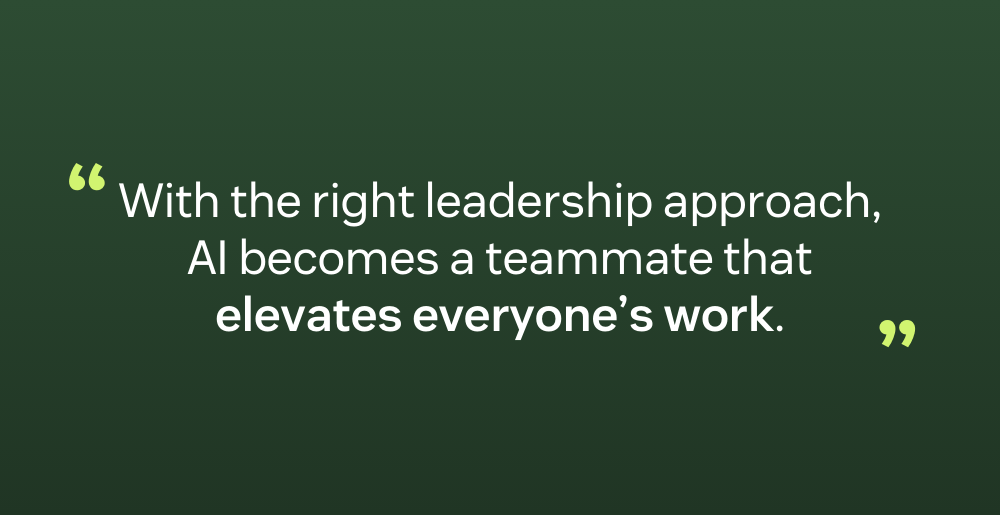5 min read
From service agents to AI teammates: The human architecture of agentic service
How human-centered design, clear roles, and thoughtful AI support help teams create faster, more empathetic, and more efficient customer experiences at scale.
Kesha Williams
Vice President, AI Engineering and Enablement at Keysoft
최종 업데이트: November 21, 2025
Disclosure: My perspective, shared in partnership with Zendesk.
Across every industry, service leaders are feeling the pressure to meet the needs of the communities they serve. Customers want quick answers delivered with empathy. Human agents want support that removes friction and helps them show up at their best. Organizations want to deliver all of this without overloading their teams. Zendesk AI gives leaders a path forward by shifting how we think about teamwork.
Service today is no longer a sequence of handoffs. It requires a coordinated effort between people and AI teammates working together to deliver outcomes that feel personal and timely.

Agentic service asks leaders to rethink how work moves through their organization and how both human and AI agents contribute to the customer journey. This evolution centers around elevating, not replacing roles. AI accelerates routine tasks so human agents can focus on moments that require connection, creativity, and understanding.
Leaders guide this shift from managing workflows to orchestrating intelligent partnerships. They set the vision, build trust, and create an environment where people and AI work together with confidence and clarity.
In this post, I outline the leadership principles that make human-AI collaboration work in practice. These ideas focus on how to design the systems, workflows, and team culture that allow people and AI to operate as true partners in customer experience.
Understanding agentic AI
Agentic service begins with understanding what agentic AI truly does. Beyond just drafting responses, this is AI that can interpret a goal, choose an action, and move work forward.
It brings structure and momentum to service workflows, while people bring empathy, judgment, and relationship building. Together, they create experiences that feel efficient and thoughtful. When leaders understand agentic AI, they can shape a system where people and AI support each other in ways that feel natural.
Designing shared workflows
A core responsibility of a service leader is designing how people and AI work together. Zendesk AI can handle tasks such as routing, summarization, classification, and pattern detection. Human agents guide conversations that require emotional intelligence and nuanced decision-making.
Leaders define what AI leads, where humans step in, and how both stay aligned. Without this clarity, teams may feel unsure about how to integrate AI into their work.
This is also where leaders can reduce the rise of unsupported tools—so-called Shadow AI. When organizations do not provide trusted AI, human agents create their own workarounds. This shows initiative but introduces security risk and inconsistency.
Through shared workflow design, leaders can signal to their teams that AI is supported and encouraged as part of the larger organizational strategy, not something they need to navigate alone.
Building trust in human-AI collaboration
Trust is something leaders build with intention. Customers need to trust AI-driven interactions. Human agents need to trust the AI that supports them. And leaders need to trust the systems they are guiding.
Trust begins with how the interaction feels. Customers respond best when AI communicates with warmth, clarity, and respect. They want support that still feels human-centered, even when handled by AI.
Voice AI is becoming a major part of this shift. Customers increasingly expect natural, conversational experiences. Leaders help teams adjust by setting standards for tone, accuracy, and clear handoff points. Trust grows when AI behaves predictably.
Human agents also rely on predictability. They work best when AI behaves consistently, provides helpful context, and supports decision-making rather than overriding it. Leaders reinforce this trust by clarifying how AI makes decisions, how it uses data, and where humans retain control.
Preparing teams for an AI-first future
The move toward an AI-first model is underway, and leaders play a central role in helping teams adapt. Zendesk AI can manage ticket flow, surface insights, and identify patterns across conversations. These capabilities reduce repetitive tasks and give human agents more room to focus on deeper customer needs.
Preparation starts with alignment. Leaders ensure that data is accurate, connected, and accessible. AI cannot personalize support or provide meaningful recommendations without clean information.
Preparation also involves supporting teams through change. AI can feel intimidating without context or training. Leaders help teams see AI as support, not surveillance. When leaders set this tone, teams embrace AI more confidently and see it as part of a shared mission.
Designing consistent, connected support
Customers expect a consistent service experience across voice, chat, email, and self-service. Leaders create this consistency by aligning teams, clarifying expectations, and ensuring Zendesk AI has access to the information it needs to bridge channels smoothly.
Zendesk AI helps create cohesion by recognizing intent, understanding customer history, and surfacing insights that connect the dots. This reduces friction and gives human agents a clear starting point.
Leaders strengthen this experience by breaking down internal silos. AI can enhance communication, but it cannot fix structural divides in data or operations. It’s up to leaders to build unified systems, define shared goals, and ensure everyone sees the same view of the customer.
Leading the future of CX
The future of service will be shaped by leaders who guide the partnership between people and AI with clarity and intention. That means creating an environment where AI agents and human agents work together as a unified team.
Agentic service is a human-centered evolution. Customers want efficiency without losing connection, and human agents want support without losing autonomy. Zendesk AI provides the capabilities, and leaders bring the vision that turns those capabilities into meaningful customer experiences.
With the right leadership approach, AI becomes a teammate that elevates everyone’s work. The organizations that thrive will be the ones that treat AI as a partner that helps teams deliver service moments customers remember. Explore how Zendesk AI can help you deliver these moments.
